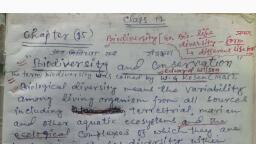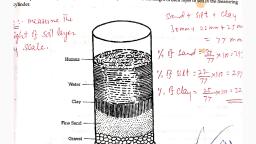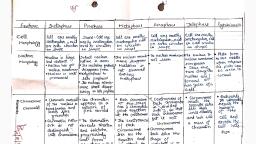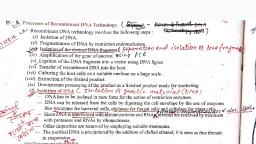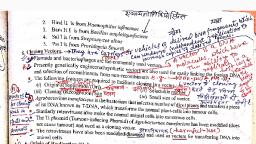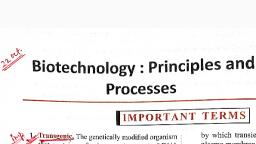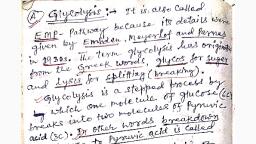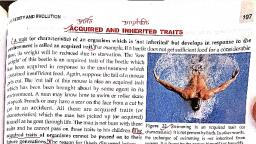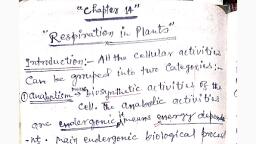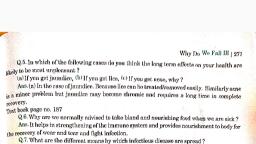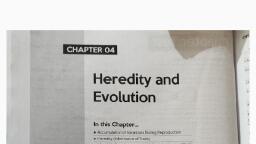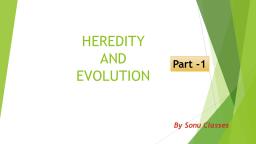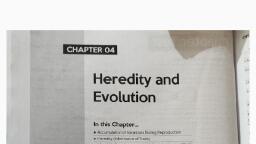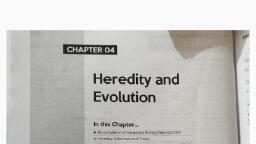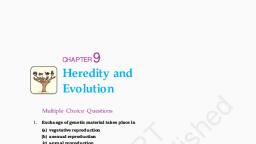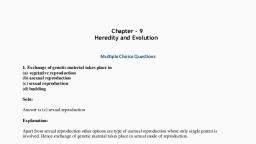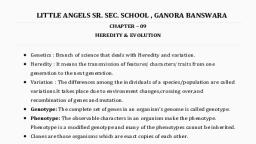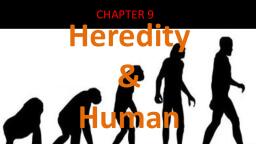Page 1 :
180, , , , a_uni on a chromosome, , : Teure 4). There., characteristic (or trait) of an organism (sce Figure eemeae, ious characteristics pf an organism. Gent, , which control various characteristic, , rin, characteristics (or traits) fro nL parente to-thelr-offsP resented by letters., , : F ‘edity, genes are re, diagrams and in explanations of heredity, genes a |, For example, t, , , , same lette, , , , characteristics are given th, whereas the gene for dwar, , , , e: s dene an orgy, forms of the same gene (which controls the length of ta, te : iscoverc » time when Me or, note that(genes had not been discovered at the tine factors’ which were used by Mendel as carrie, The le ‘s, , , , , , » inheritance of characteristics, to study the inheritance of characte, , heredity informati pe y known as ‘genes’)*, , , , Figure 3. This is a full set of chromosomes present in a human, cell. A normal cell of human body contains 23 pairs of, chromosomes. 22 pairs of chromosomes match in males and, females but 23rd pair is different. X and Y are the sex, chromosomes in a male (as shown above) buta female has two X, chromosomes., , Genes for controlling the same characteristic of an, , The gene which decides the appearance of an orga, , chromosome of the pair. The gene which can decide, , of another identical gene is called a recessive gene. A single recessive ene cannot decide the appearance, , of an organism. The dominant gene is represented, , gene is represented by the corresponding small letter) For example, in pea plants, the dominant gene for, tallness is T and the recessive gene for dwarfness is t. Thus, when we write the genetic cross for pea plant,, , t represents ‘dwarf’,, 4Genotype shows the genetic constitution of an organism; In simple words,, , if genes present in an organism, Genotype is always a, , 1e different forms of the same gene), Thus, the genot, , then the capital ‘T’ represents ‘tall’ and sma, , »{f formed _of DNA which Catries, , LZ < > in the nucleus of a cell somes in their nucleiy A {he, Chromosome js a thread-like structure anc umber of chromosomes ene ie, , ve different nt of one protein that controls as eae, , enes (see Figure 3), Different organisms ha ee, which governs the synthesis, , is represented by the le, , nism even in the Presence of an alternative gene is, known as a dominant gene. It dominates the recessive gene for the same characteristic on the other, , , , , , SCIENCE FOR TENTH CLASs ; BlOoLogy, , ona chromose ‘s, chu its of heredity which f;,, ion, Genes work in pa;, ing seproduction, K in pairg, gs_during ree senes controlling the sg, he gene for tallness is represented by the lette, T, tter t. The Ietlers T and t actually represent twig, anism, say the length of stem of a plant), Please., {conducted his experiments on pea Fant,, , sands_of genes, , , , , , , , , , Sirens of, , , , Figure 4, Every chromosome has small parts called 7, , genes) Genes control the development of inherited, characteristics such as hair colour, eye colour and, skin colour, etc, in humans., , organism can be of two types : dominant or recessive., , the appearance of an organism only in the presence _, , bya capital letter and the corresponding recessive, , “a, FR, enotype is the description |, , air of letters such Tt or tt. where T and tare, eof a tall plant could be TT or Tt whereas that, —______
Page 2 :
Controlled by pe, , svar pant it The characteristic (or trait) which is le in an organism is called its phenotype: For,, ple, being ‘tall’ or ‘dwarf’ (short) are phenotypes of a p ant t these traits can be seen by us oF, toy are visible to_us. The phenatype of an organism is actually its p| ysical mmm oe, “aracteristic which is determined by its genotype. For example, genotype, TT or Tt results in a tall phenotype and the genotype tt results in a dwarf, , phenoly pe), , LWhen two parents cross (or breed) to produce progeny (or offsprings),, , then their progen is called first filial generation or F; generation (where FP:, , Stands for Filial which denotes progeny of a cross)\When the first generation, progeny cross (or breed) among themselves to produce second generation, , progeny, then this progeny is called second filial generation or F, generation., inother words, the generation produced by crossing two F; progeny is called, fF generation. An example will make it more clear. Mother and father are, , parental generation. Their children are F, generation, and the grandchildren, are F, generation) {, , , , , , , , , , , , , , , , , , , , , , , , \ ere, Gregor Mendel was the first scientist to make a systematic study of Figur Gregor Mendel ,The first, patterns of inheritance which involved the transfer of characteristics from, , scientist to make a systematic study, parents to progeny (see Figure-7)$He did this by using different varieties of nye Ae po, pea plants (Pisum sativum) which he grew in his garden. Some of the “, characteristics (or traits) of the pea plants whose transmission to progeny_was investigated by Mendel, were height of pea plant or length of stem of pea plant (tall or dwarf), shape of seeds (round or wrinkled), and colour of seeds (yellow or green)}(see Figure 8). A yet another contrasting characteristics (or traits), investigated were|colours of flowers (white or violet). 4-7" , , , , , }Mendel chose pea plants for studying inheritance because pea plants had a number Of’clear cut, differences which were easy to tell apart, For example, some pea plants were ‘tal!’ (having Jong stem), whereas others were ‘dwarf (having short stem).Some pea plants produced _round-yellow seeds whereas, others produced wrinkled-green seeds, etc. Another reason for choosing pea plants was that they were self_, pollinating (which enabled them to produce next generation of plants easily).And finally, Mendel chose p
Page 3 :
SCIENCE FOR TENTH CLASS : BIOLogy @, , 4 i of @.9 @, , , , , , y Green, Tall Dwart Round > Wrinklod , Yellow, (short) yo Gc 5 at, : ) Seed colour, & Height of pea plant (YD Seed shape aS), , Figure 8. Some of the characteristics (or traits) of pea plants studied by Mende, , ‘ ‘ : 5 oe generations of peg, , plants to study inheritance\(and not animals including human beings){ because_ man, = a thang, . 1 ~ 1, , plants can be produced in a comparatively short time span and their study is much simple, , animalsa, , , , , , , ‘Anew form of plant resulting from a cross (or breeding) of different varieties of a plant is known as, ake When we breed two pea plants having one contrasting characteristic each (or one trait each) to, obtain new plants, then it is called a monohybrid cross. In monohybrid cross we will study the inheritance 4, of one pair of contrasting characteristics ‘tallness’ and ‘dwarfness’ of the pea plants by their first 3, generation and second generation progenyOn the other hand,(if we breed two pea plants having two, , contrasting characteristics each (or two ffaits each) to obtain new plants, then it is called a dihybrid cross. :, In the dihybrid cross we will study the inheritance of two Pairs of contrasting characteristics of pea |, plants such as round-yellow seeds and wrinkled-green seeds, , , , , , , , d, . ’ .



